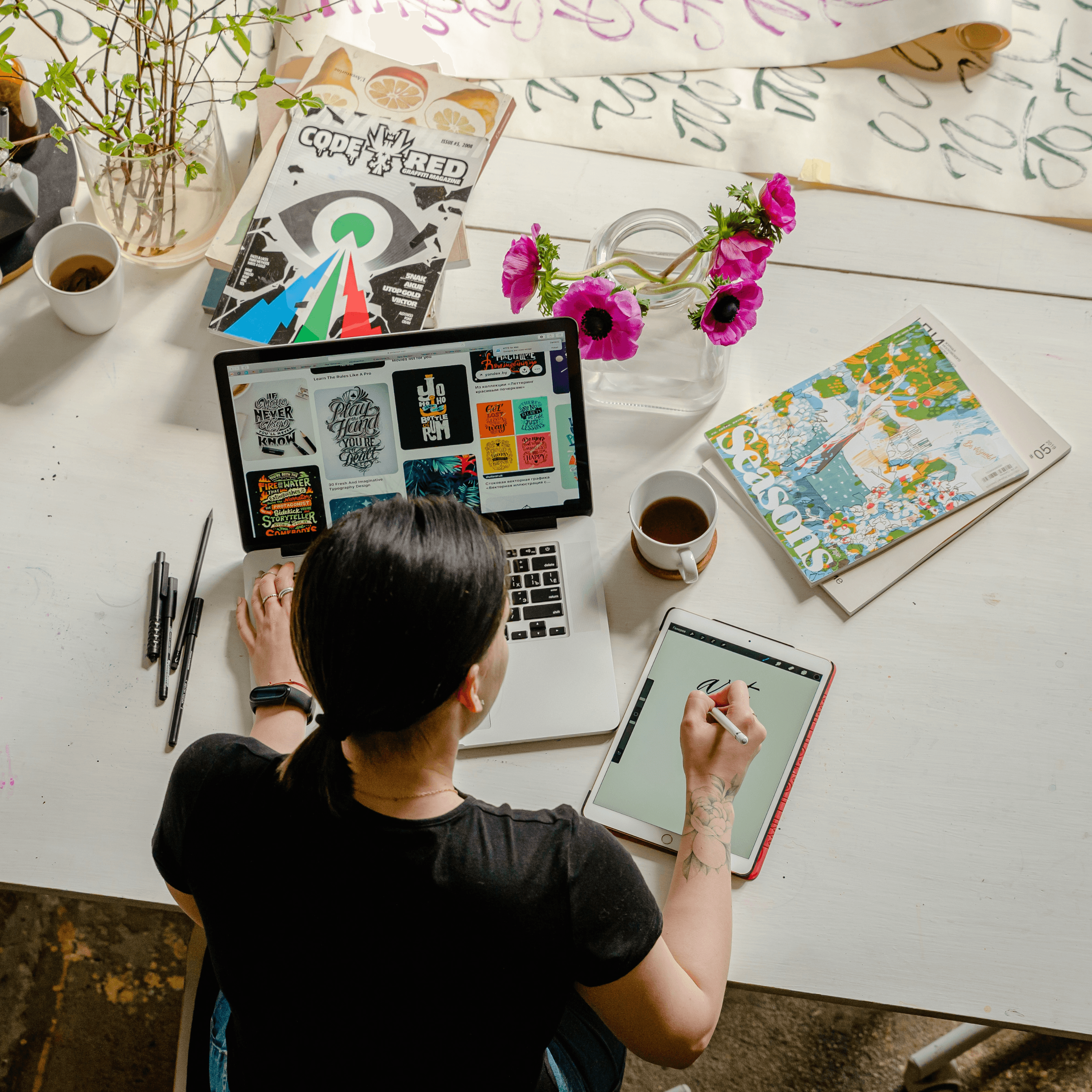Nav.SoftwareServices
Nav.forCompanies
Nav.forDevs
Products
Portfolio
Nav.hireDevs
Nav.hireDevs
Get Senior Engineers Straight To Your Inbox

Every month we send out our top new engineers in our network who are looking for work, be the first to get informed when top engineers become available

At Slashdev, we connect top-tier software engineers with innovative companies. Our network includes the most talented developers worldwide, carefully vetted to ensure exceptional quality and reliability.
Build With Us
The Evolution of AI in Graphic Design: Revolutionizing the Creative Process/


Introduction
Artificial Intelligence (AI) has rapidly transformed various industries, and graphic design is no exception. The integration of AI technologies in graphic design has revolutionized the creative process, providing designers with powerful tools and automation capabilities. In this article, we delve into the exciting developments in AI-powered graphic design, exploring its impact, applications, and the future of AI in the field.
Understanding AI in Graphic Design

Defining AI and its Role in Design
AI refers to computer systems capable of performing tasks that typically require human intelligence. In graphic design, AI algorithms can analyze data, recognize patterns, and generate visual elements, empowering designers with innovative solutions and efficient workflows.
Machine Learning and Deep Learning in Graphic Design
Machine Learning (ML) and Deep Learning (DL) algorithms enable computers to learn from data and make predictions or decisions. These technologies have been instrumental in developing AI-powered design tools that automate repetitive tasks, generate design variations, and assist in the creative decision-making process.
AI Applications in Graphic Design
Automated Design Generation
AI algorithms can automatically generate design elements such as logos, icons, and illustrations based on user inputs and predefined parameters. These tools leverage vast datasets and design principles to create visually appealing and unique designs quickly.
Image Recognition and Editing

AI-powered image recognition technology can identify objects, colors, and patterns within images, enabling designers to extract relevant information or automate specific editing tasks. This streamlines the design process and enhances productivity.
Data Visualization and Infographics
AI algorithms can analyze complex datasets and generate informative and visually engaging data visualizations and infographics. These tools help designers present information in a visually compelling manner, improving communication and understanding.
Typography and Layout Optimization
AI-powered tools can suggest suitable fonts, typography combinations, and layout arrangements based on design objectives and user preferences. This streamlines the typography and layout selection process, saving time and effort for designers.
Evolution of AI in Graphic Design
Design Assistance and Collaboration
AI-driven design assistants can provide real-time feedback, suggestions, and design recommendations, augmenting the capabilities of designers and facilitating collaboration among team members. These tools act as virtual design partners, improving overall design quality.
Style Transfer and Creative Exploration
AI algorithms can analyze and learn from existing design styles, enabling designers to experiment with different artistic influences and create unique design variations. This fosters creative exploration and pushes the boundaries of traditional design approaches.
User Experience Design
AI technologies play a vital role in user experience (UX) design by analyzing user behavior, preferences, and feedback. AI-powered tools can generate user personas, conduct usability testing, and provide insights for optimizing UX design decisions.
Future Implications and Challenges
Enhanced Creative Collaboration
AI has the potential to facilitate collaboration among designers, clients, and stakeholders by providing real-time design previews, feedback integration, and remote design collaboration capabilities. This opens up new possibilities for global and cross-disciplinary collaboration.
Ethical Considerations
As AI becomes more prevalent in graphic design, ethical considerations, such as copyright infringement, plagiarism, and bias in design outputs, need to be addressed. Designers must be aware of the ethical implications of AI and ensure responsible use of these technologies.
Human-Machine Partnership
AI should be viewed as a complement to human creativity rather than a replacement. The future of graphic design lies in the collaboration between designers and AI-powered tools, where machines assist in repetitive tasks, generate ideas, and amplify human creativity.
Conclusion
The integration of AI in graphic design has transformed the creative landscape, offering designers powerful tools, automation capabilities, and innovative solutions. As AI continues to advance, we can expect even more sophisticated and personalized design experiences. By embracing the possibilities of AI, designers can streamline workflows, enhance creativity, and deliver exceptional visual experiences.
In conclusion, AI is revolutionizing graphic design, empowering designers with advanced automation and creative assistance. By leveraging AI-powered tools and technologies, designers can unlock new levels of efficiency, productivity, and innovation in their work. As the field of graphic design continues to evolve, embracing AI will be crucial for staying at the forefront of industry trends and delivering impactful design solutions.
Visit slashdev.io for more insights and resources on AI in graphic design and other cutting-edge technologies.

